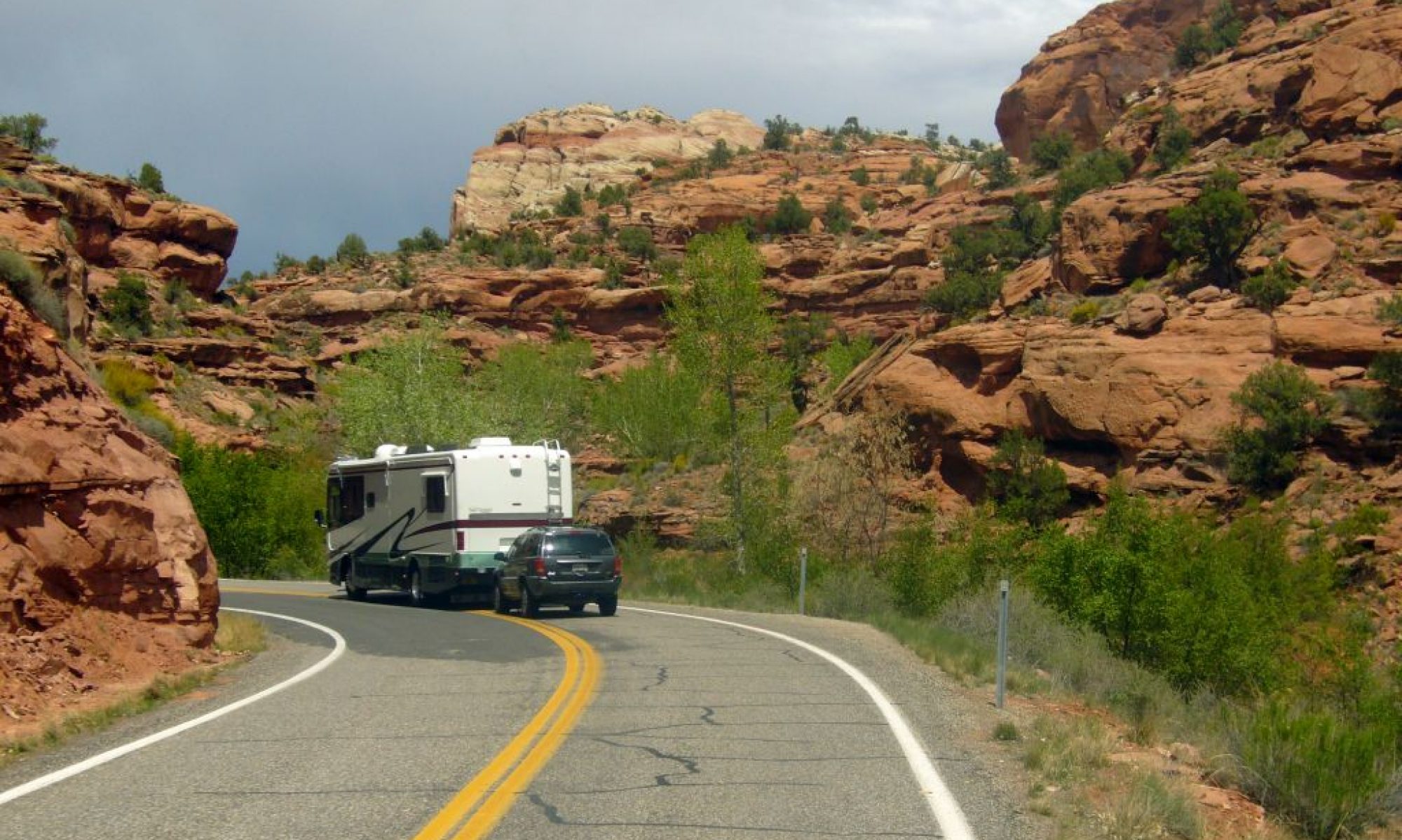Hookups vary significantly between private and public campgrounds, but here are some examples for USA campgrounds:
Electric
Electric service will normally only be available at private campgrounds, although there are some exceptions. The two main types of electric hookup are 30 amp (30A) and 50amp (50A). Generally, larger RVs with several air conditioners will require 50A service, while smaller RVs will require 30A service.
If your RV has a 50A power cord but you’re at a campsite with only 30A service, you can buy or borrow and adapter, sometimes known as a ‘dog bone’ adapter. However, be advised that you won’t be able to draw more than 30 amps, and so will need to ‘manage’ your electrical load. Some RVs have a power center that detects when you’re plugged into 30A service, and will automatically manage the electrical load accordingly (e.g. it may block one or more a/c units and other appliances).
Camp sites with 50A service usually have both 50A and 30A receptacles.
Occasionally, you’ll come across a campsite with 20 amp or 15 amp service, and this will severely limit the amount of power that can be drawn. An adapter will be needed to connect your power cord to the receptacle.
Occasionally you’ll come across a state park that will have water &/or electricity at some or all sites.
Plugging in at home
Occasionally you’ll have the need to plug into an outside or garage receptacle when at home or parked in someone’s driveway. This will usually require an extension cord, and you should use the largest cord available to avoid unacceptable voltage reduction at the RV. It will also require the use of an adapter. In most cases you’ll be limited to powering the battery charger and some limited 120V loads. It’s unlikely you’ll be able to run an air conditioner using this setup
Water
Water hookup, where available, will be via a hose bib. Remember to use a ‘drinking water safe’ hose to hook up. Some RVs have a valve to switch between ‘tank fill’ and ‘city water’. Use the latter to have the hookup continually provide water to your RV. Tank fill, as its name suggests, is intended for filling the fresh water tank.
Water pressure at some campgrounds will be high enough to possibly cause leaks in your RV. To mitigate these situations, hook a water pressure regulator between the site water supply and your fresh water inlet. Many RVers also hook a water filter prior to the RV water inlet.
Water may be available at a dump station, but be aware that it may not be potable water and, in these cases, should only be used to flush your waste hose. Look for a sign that tells you if the water is potable &/or can be used in your fresh water tank.
Sewer
Sewer hookups on an RV are usually comprised of two drains, one each for the gray and black tanks, that connect to a single ‘sewer dump’ connection. .
Some RVs have two gray tanks, due to the location of bathroom(s) and sinks. They may also have a second gray waste hookup.
Each of the black and gray drains will have its own valve that is opened to dump the contents of the respective tank.
A sewer hose will usually be provided with your RV, but can also be purchased at Walmart, an RV parts store, or online. Some campgrounds don’t have sewer hookups, but may have an on-site ‘dump station’ where you can dispose of your gray and black waste.
Cable TV
Cable TV hookups will normally only be provided at private campgrounds. You’ll need a length of coax cable to connect the service to your RV.
Internet service
Most private campgrounds offer wifi for internet service, but most people find them limited and inadequate for streaming video. A small number of private campgrounds offer a hard connection via a modem loaned by the campground office (for a deposit).
Many RVers bring their own Wifi device with service via a cellular carrier. Service is a little expensive, and often limited in speed and bandwidth, depending on the service contract.
Satellite internet service through HughesNet is a preferred option for some RVers, but does require a clear sight of the southern sky (i.e. away from trees).
A more recent satellite internet service is provided by StarLink. There’s an initial hardware cost and somewhat expensive monthly fee.

